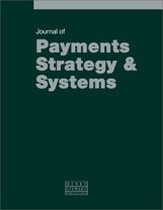Liquidity saving in real-time gross settlement systems: An overview
Abstract
During the past two decades, Large Value Payment Systems (LVPSs) in many countries have been redesigned so that the payments which they process are settled on a Real-Time Gross Settlement (RTGS) basis. Such systems eliminate inter-bank credit risk in the payment system — which, from the perspective of the Bank of England, is a key feature of the UK’s LVPS, CHAPS, and one which cannot be compromised by any future design changes. But such RTGS systems can require relatively large amounts of liquidity to be available. So some of the more recent RTGS system designs — for instance, TARGET2 (for euro payments) or Japan’s BOJ-Net — have incorporated sophisticated ‘liquidity-saving mechanisms’. These mechanisms have allowed participants in the payment system to save on liquidity needs without reintroducing inter-bank credit risk. To support discussions among participants in CHAPS on possible liquidity-saving mechanisms, this paper sets out a conceptual framework for thinking about the drivers of liquidity needs in RTGS systems. It then discusses a number of practical liquidity-saving measures, which can meet the good of greater liquidity efficiency without reintroducing credit risk.
The full article is available to subscribers to the journal.
